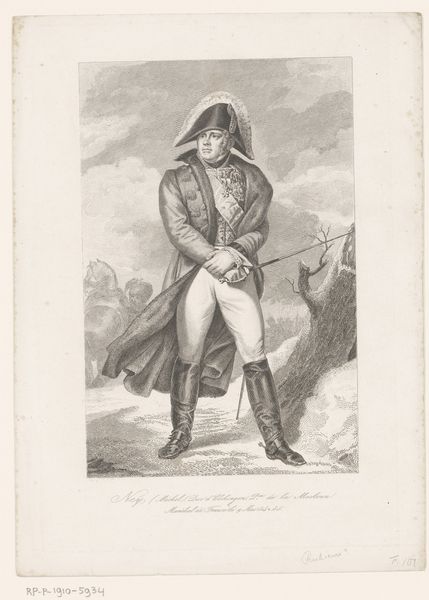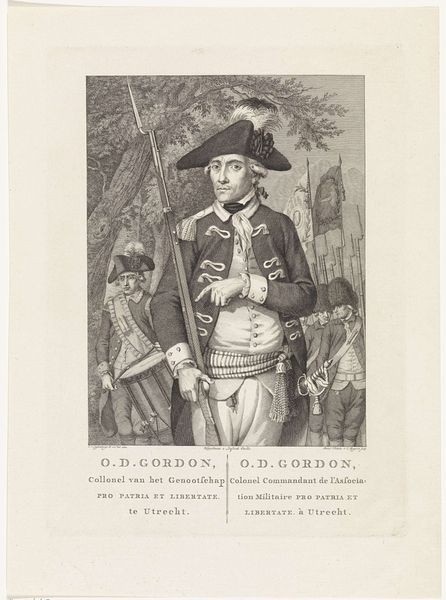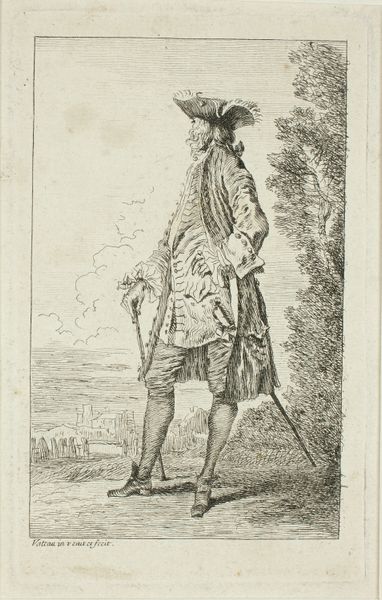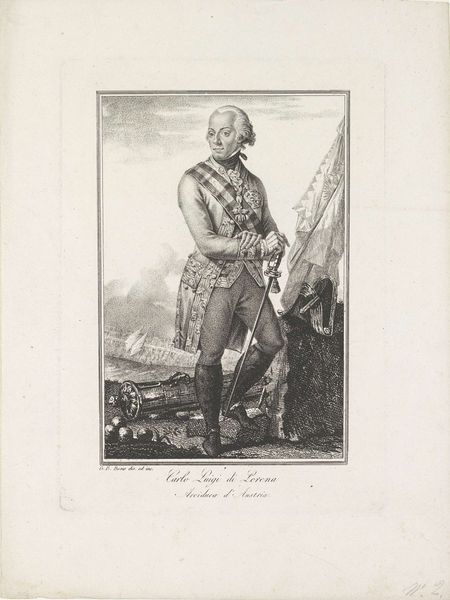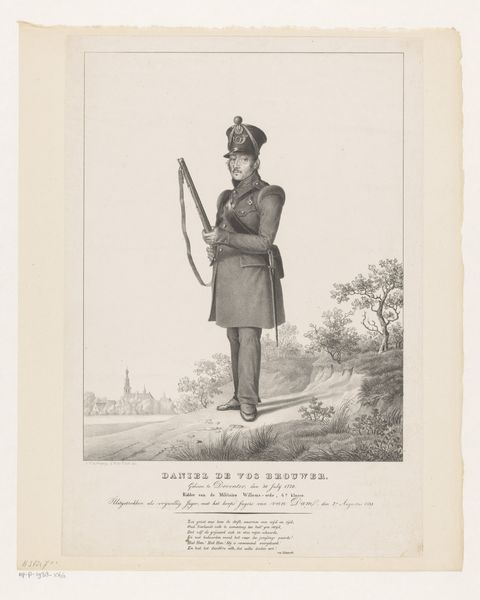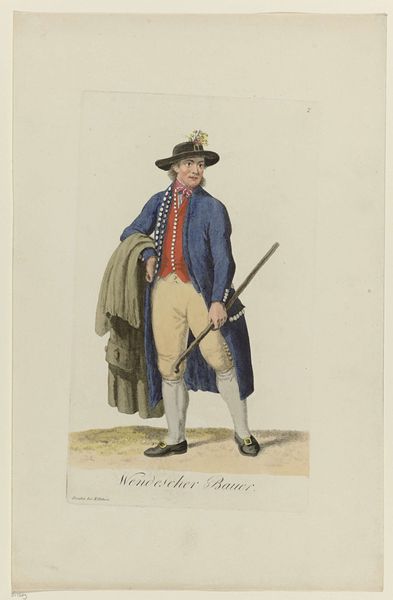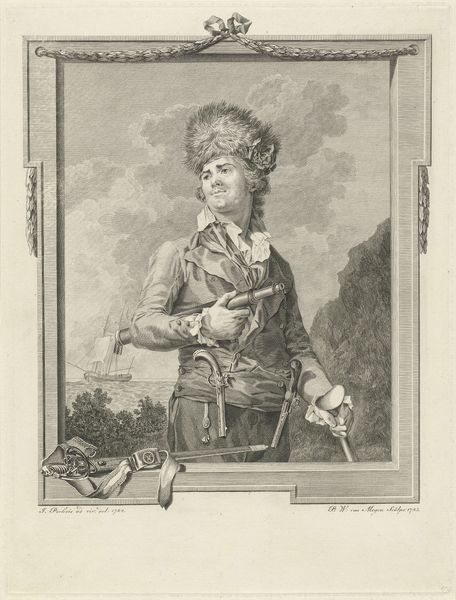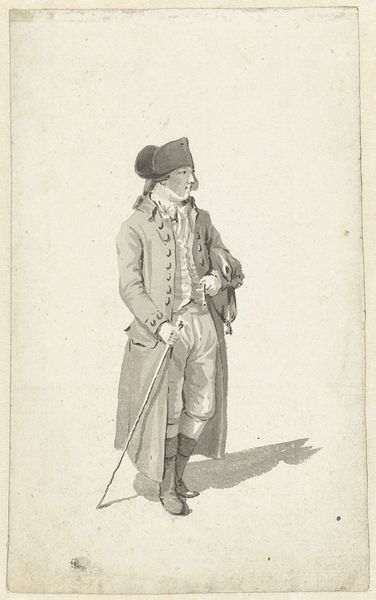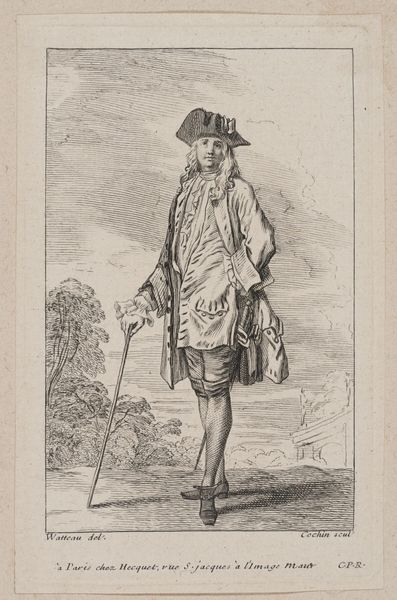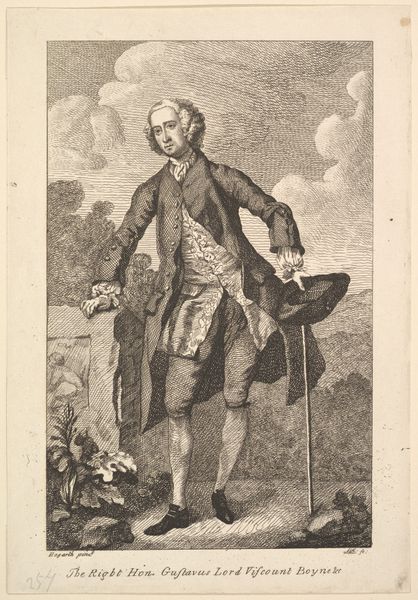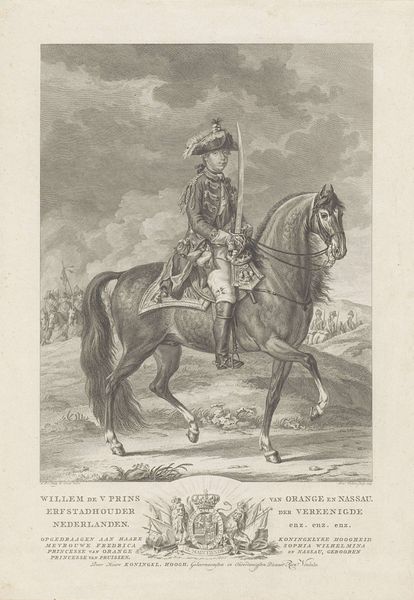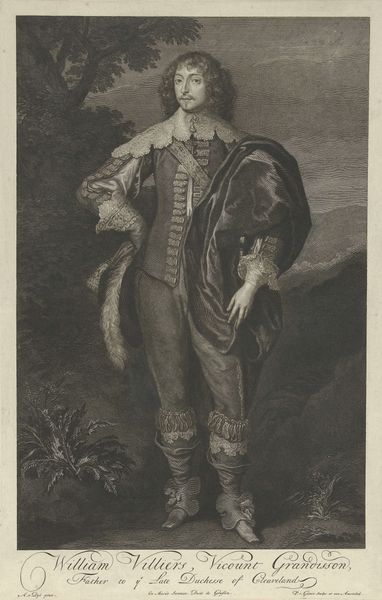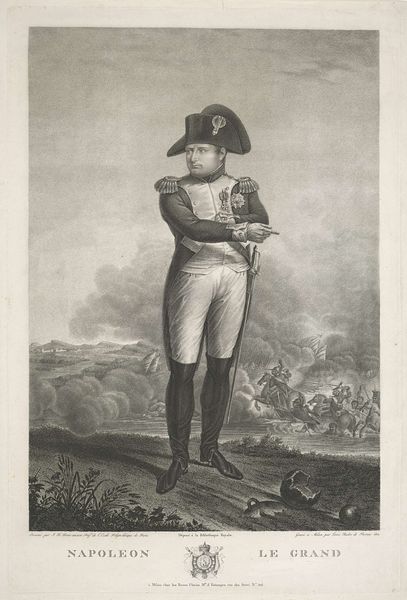
engraving
#
portrait
#
neoclacissism
#
history-painting
#
engraving
#
realism
Dimensions: height 422 mm, width 318 mm
Copyright: Rijks Museum: Open Domain
Curator: Today we are looking at David Moens’ engraving, "Portret van Willem I Frederik, koning der Nederlanden," which was created between 1790 and 1832. Editor: What strikes me first is the stark contrast. The figure is quite crisp, while the background almost dissolves into the sky, and the stark line work reminds me of early printed news images. Curator: That contrast serves to highlight the subject, of course. Note how the engraver uses varied line weights to suggest volume and texture. The meticulous cross-hatching in the folds of Willem's coat creates a convincing sense of depth. This dedication to realistic detail contrasts with the neoclassical composition in its emphasis on verticality, contributing to a distinctly regal effect. Editor: It does, but let's not ignore the material conditions that allowed this piece to come into being. This was clearly intended for mass distribution, using the reproducibility of the engraving process to assert the King's image across the land. The scale, too, would have been significant – intimate, rather than bombastic like an oil painting for example. Curator: The scale allows for an interesting play between public image and individual character, perhaps. But consider the broader artistic context. This engraving appears at the intersection of realism and neoclassicism, where ideals of truth and order are visually manifest through Moens' technique, resulting in an idealized but grounded representation. Editor: Exactly. The industrial labor, skill of reproduction, the very dissemination of this engraving is inextricably linked to power. The artist’s labor creates the King’s symbolic power; even in the choice of medium – engraving—asserts and reproduces established hierarchies of material and labour. Curator: So, you see the act of its creation, the material reality of the engraving, as inextricable from its symbolic weight? Editor: Precisely. It's through the materiality that the ideology truly breathes. Curator: A potent reminder to consider both the visual and the vocational in our encounters with art, then. Editor: A fascinating duality, indeed!
Comments
No comments
Be the first to comment and join the conversation on the ultimate creative platform.
